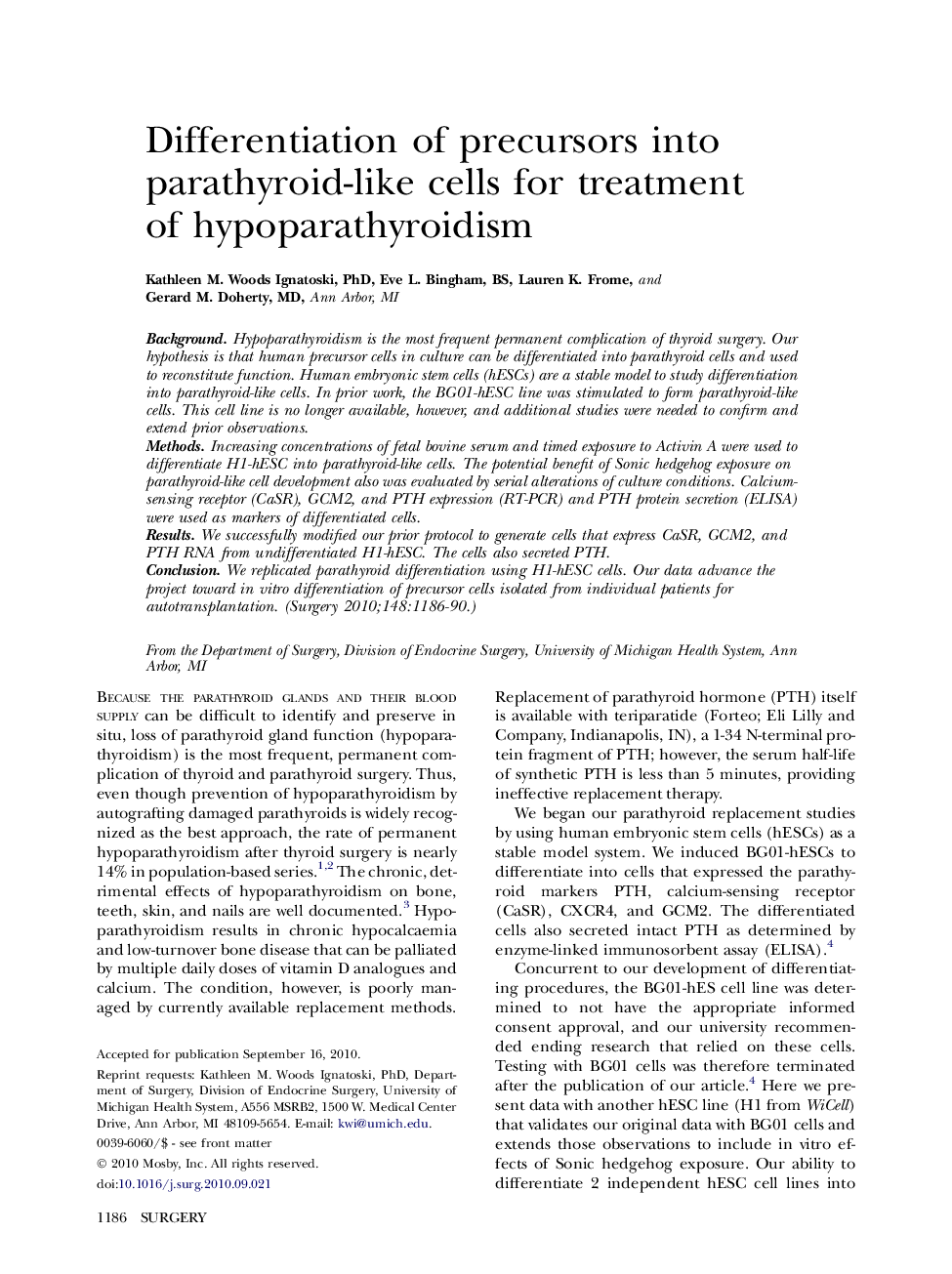| Article ID | Journal | Published Year | Pages | File Type |
|---|---|---|---|---|
| 4308320 | Surgery | 2010 | 5 Pages |
BackgroundHypoparathyroidism is the most frequent permanent complication of thyroid surgery. Our hypothesis is that human precursor cells in culture can be differentiated into parathyroid cells and used to reconstitute function. Human embryonic stem cells (hESCs) are a stable model to study differentiation into parathyroid-like cells. In prior work, the BG01-hESC line was stimulated to form parathyroid-like cells. This cell line is no longer available, however, and additional studies were needed to confirm and extend prior observations.MethodsIncreasing concentrations of fetal bovine serum and timed exposure to Activin A were used to differentiate H1-hESC into parathyroid-like cells. The potential benefit of Sonic hedgehog exposure on parathyroid-like cell development also was evaluated by serial alterations of culture conditions. Calcium-sensing receptor (CaSR), GCM2, and PTH expression (RT-PCR) and PTH protein secretion (ELISA) were used as markers of differentiated cells.ResultsWe successfully modified our prior protocol to generate cells that express CaSR, GCM2, and PTH RNA from undifferentiated H1-hESC. The cells also secreted PTH.ConclusionWe replicated parathyroid differentiation using H1-hESC cells. Our data advance the project toward in vitro differentiation of precursor cells isolated from individual patients for autotransplantation.
